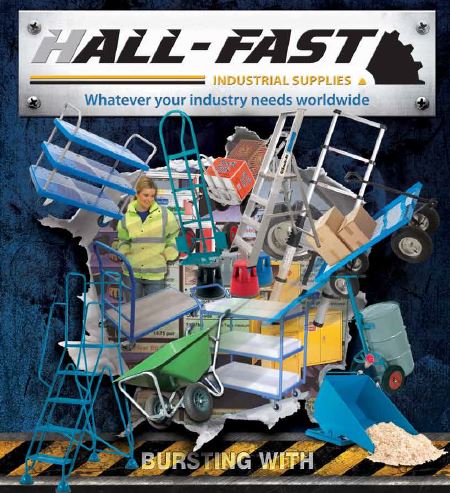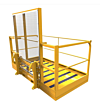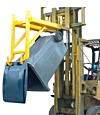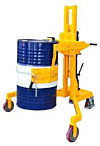
The professional tools industry is experiencing a transformative period in 2025, driven by technological innovation, evolving user expectations, and changing work patterns across all sectors. From advanced battery technologies to smart connectivity features, the tools that professionals rely on daily are becoming more sophisticated, efficient, and user-friendly than ever before. At Hall-Fast, we understand that whatever your industry needs worldwide, having access to the right tools can make the difference between project success and failure, between efficiency and frustration, between safety and risk.
The Evolution of Professional Tools in 2025
The global tools market was valued at USD 42.50 billion in 2023 and is projected to grow at a compound annual growth rate of 5.7% from 2024 to 2030, driven by flourishing end-use industries such as automotive, aerospace, oil & gas, and construction worldwide. This growth reflects not just increasing demand but also the rapid evolution of tool technologies that are reshaping how professionals work.
The power tools market specifically is projected to grow from $29.69 billion in 2025 to $40.95 billion by 2032, at a CAGR of 4.7% during the forecast period. While this growth is significant, it's the qualitative changes in tool capabilities that are truly revolutionary. Modern professional tools are becoming smarter, more connected, and more capable of supporting complex professional tasks.
The Technology-Driven Transformation
Enhanced battery technology alone has transformed the production and distribution of power tools over the past several years. The expansion of cordless technology has been one of the biggest influences on the power tool industry, with purchases of cordless/battery-operated screwdrivers, saws, and combo kits increasing dramatically. This shift represents more than convenience—it represents a fundamental change in how professionals approach their work.
The adoption of cordless equipment is increasing operating hours and improving job site mobility. However, the transformation goes beyond simple cordless operation. Modern tools are integrating Internet of Things (IoT) capabilities, wireless connectivity, and advanced battery management systems that provide users with unprecedented control and insight into their tools' performance.
Advanced Battery Technologies: Powering the Future
The most significant advancement in professional tools has been the development of advanced battery technologies that deliver power, runtime, and reliability that rivals or exceeds corded alternatives. These improvements have made cordless tools viable for the most demanding professional applications.
Lithium-Ion Evolution
Modern lithium-ion batteries represent a quantum leap from earlier battery technologies. Today's batteries deliver:
Extended Runtime: Advanced cell chemistry and battery management systems provide all-day operation for most professional applications.
Rapid Charging: Fast-charging capabilities minimize downtime, with many batteries reaching 80% capacity in 30 minutes or less.
Durability: Improved battery construction withstands the harsh conditions of professional job sites.
Temperature Tolerance: Advanced batteries maintain performance across wider temperature ranges, from cold construction sites to hot industrial environments.
Battery Platform Integration
Major manufacturers are developing comprehensive battery platforms that enable professionals to use the same batteries across multiple tools. This standardization provides several advantages:
Cost Efficiency: Reduced need for multiple battery types and chargers lowers overall tool system costs.
Operational Efficiency: Professionals can interchange batteries across tools, maintaining productivity throughout the workday.
Inventory Simplification: Simplified battery management reduces complexity and storage requirements.
Future-Proofing: Platform compatibility ensures that battery investments remain valuable as tool lines evolve.
Smart Tools and Connectivity
The integration of smart technology into professional tools is creating new possibilities for productivity, safety, and quality control. These intelligent tools can communicate with smartphones, tablets, and other devices, providing real-time data and remote control capabilities.
IoT Integration
Internet of Things technology in professional tools enables:
Performance Monitoring: Real-time tracking of tool performance, usage patterns, and maintenance needs.
Location Tracking: GPS-enabled tools can be located if lost or stolen, a significant concern for professional contractors.
Usage Analytics: Detailed data on how tools are used helps optimize workflows and identify training needs.
Predictive Maintenance: Smart tools can predict when maintenance is needed, preventing failures and extending tool life.
Wireless Connectivity Features
Modern professional tools increasingly feature wireless connectivity that enables:
Remote Control: Ability to control tools remotely for improved safety and convenience.
Data Synchronization: Automatic synchronization of usage data with management systems.
Firmware Updates: Over-the-air updates that add new features and improve performance.
Integration with Other Systems: Seamless integration with project management and inventory systems.
Precision and Accuracy Enhancements
Professional work demands exceptional precision, and modern tools are delivering accuracy levels that were previously unattainable. Advanced sensors, digital displays, and computer-controlled mechanisms are enabling professionals to achieve results that meet the most demanding specifications.
Digital Measurement Systems
Modern measuring tools incorporate digital technologies that provide:
Instant Readings: Digital displays that eliminate measurement errors and provide immediate feedback.
Data Recording: Automatic recording of measurements for quality control and documentation purposes.
Calculation Capabilities: Built-in calculators that perform complex calculations automatically.
Connectivity: Ability to transmit measurements directly to documentation systems.
Computer-Controlled Precision
Advanced tools now incorporate computer control systems that:
Eliminate Human Error: Automated control systems ensure consistent results regardless of operator skill level.
Enable Complex Operations: Computer control enables operations that would be impossible with manual tools.
Provide Repeatability: Consistent results across multiple operations and operators.
Support Quality Control: Detailed logs of all operations for quality assurance and troubleshooting.
Ergonomics and User Experience
The demanding nature of professional work requires tools that minimize fatigue and maximize comfort during extended use. Modern tool design incorporates advanced ergonomic principles and user experience research to create tools that support professional productivity.
Advanced Ergonomic Design
Modern professional tools feature:
Optimized Weight Distribution: Careful balance design that reduces strain during extended use.
Comfortable Grips: Advanced grip materials and shapes that reduce hand fatigue and improve control.
Vibration Reduction: Advanced dampening systems that minimize vibration transmission to the user.
Intuitive Controls: User interfaces designed for easy operation even while wearing gloves or in challenging conditions.
Reduced Physical Strain
Ergonomic improvements in professional tools include:
Lightweight Construction: Advanced materials that reduce tool weight without compromising strength or durability.
Balanced Design: Optimal weight distribution that reduces strain on wrists, arms, and shoulders.
Adaptive Features: Tools that adjust to user preferences and work conditions.
Safety Enhancements: Features that reduce the risk of injury during normal operation.
Industry-Specific Tool Development
Different industries have unique requirements that drive specialized tool development. Understanding these specific needs enables manufacturers to create tools that excel in particular applications while maintaining versatility for general use.
Construction and Building Trades
The construction industry demands tools that can withstand harsh conditions while delivering reliable performance. Modern construction tools feature:
Weather Resistance: Advanced sealing and materials that protect against moisture, dust, and extreme temperatures.
Durability: Construction designed to withstand drops, impacts, and heavy use.
High Performance: Powerful motors and advanced mechanisms that handle demanding applications.
Safety Features: Integrated safety systems that protect workers in hazardous environments.
Manufacturing and Industrial Applications
Manufacturing environments require tools that deliver precision and reliability in production settings:
Precision Control: Advanced control systems that enable exact specifications and tolerances.
Consistent Performance: Tools designed for continuous operation without degradation.
Quality Assurance: Built-in measurement and documentation capabilities.
Integration Capabilities: Compatibility with manufacturing systems and quality control processes.
Automotive and Mechanical Services
Automotive professionals require specialized tools that can handle complex mechanical systems:
Specialized Attachments: Tools designed for specific automotive applications and access challenges.
Diagnostic Capabilities: Integration with diagnostic systems for comprehensive vehicle service.
Precision Torque Control: Advanced torque management for critical fastening applications.
Compact Design: Tools designed to work in confined spaces common in automotive work.
Safety Innovations in Professional Tools
Safety remains the paramount concern in professional tool design, with manufacturers incorporating advanced safety features that protect users while maintaining productivity. Modern safety systems go beyond basic protection to provide intelligent safety management.
Active Safety Systems
Advanced professional tools incorporate active safety features that:
Monitor Operation: Continuous monitoring of tool operation to detect unsafe conditions.
Automatic Shutdown: Immediate shutdown when unsafe conditions are detected.
User Alerts: Clear warnings when tools are operating outside safe parameters.
Prevent Accidents: Proactive prevention of accidents through intelligent system design.
Intelligent Safety Features
Smart safety systems in modern tools include:
Overload Protection: Automatic protection against excessive loads that could damage tools or cause injury.
Temperature Management: Monitoring and control of tool temperature to prevent overheating.
Vibration Limiting: Systems that limit vibration exposure to protect user health.
Emergency Stops: Easily accessible emergency stops that immediately halt tool operation.
Hall-Fast: Your Professional Tools Partner
At Hall-Fast, we recognize that professional success depends on having access to the right tools for every application. Our comprehensive approach to professional tools encompasses everything from basic hand tools to advanced power systems, ensuring that professionals have the equipment they need to excel in their work.
Comprehensive Tool Selection
Our extensive tools range includes everything professionals need for success:
Hand Tools: Premium hand tools designed for precision, durability, and user comfort.
Power Tools: Advanced power tools that deliver professional-grade performance and reliability.
Specialty Tools: Specialized tools designed for specific industries and applications.
Measurement Equipment: Precision measurement tools that ensure accuracy and quality.
Safety Equipment: Comprehensive safety tools and equipment that protect professionals in their work.
Supporting Products and Services
Professional tool performance depends on more than just the tools themselves. Hall-Fast provides comprehensive support through:
Quality Fasteners: Fasteners and small components that ensure reliable connections and assembly.
Essential Supplies: Consumables that keep tools operating at peak performance.
DIY and Trade Essentials: Trade essentials and DIY products that support professional work.
Maintenance Supplies: Products that ensure tools remain in optimal condition throughout their service life.
Machine Tools: Precision Manufacturing Solutions
The machine tools market is experiencing significant growth, with the global market size expected to reach $129.94 billion by 2029 at a 6.4% CAGR. This growth is driven by increasing demand for precision manufacturing across multiple industries.
Advanced CNC Technology
Modern machine tools incorporate advanced computer numerical control (CNC) systems that provide:
Exceptional Precision: Tolerances measured in micrometers for critical applications.
Complex Geometry: Ability to create complex shapes and features that were previously impossible.
Automated Operation: Reduced operator intervention and consistent results.
Integration Capabilities: Seamless integration with CAD/CAM systems and production planning.
Multi-Axis Capabilities
Advanced machine tools now offer multi-axis capabilities that enable:
Complete Machining: Ability to complete complex parts in a single setup.
Improved Accuracy: Reduced error accumulation from multiple setups.
Enhanced Efficiency: Faster production cycles and reduced handling.
Complex Geometries: Capability to machine complex three-dimensional shapes.
Hand Tools: The Foundation of Professional Work
Despite the advancement of power tools, hand tools remain essential for professional work. The global hand tools market is projected to grow from USD 17.9 billion in 2025 to USD 26.9 billion by 2035, at a CAGR of 5.7%, reflecting their continued importance in professional applications.
Advanced Materials and Construction
Modern hand tools incorporate advanced materials that provide:
Enhanced Durability: Tool steel and alloy compositions that withstand heavy use.
Weight Optimization: Lightweight materials that reduce fatigue without compromising strength.
Corrosion Resistance: Advanced coatings and materials that protect against environmental damage.
Precision Manufacturing: Manufacturing processes that ensure consistent quality and performance.
Ergonomic Enhancements
Contemporary hand tool design emphasizes ergonomics:
Comfort Grips: Advanced grip materials and designs that reduce hand fatigue.
Optimal Leverage: Handle designs that maximize force application while minimizing effort.
Balanced Design: Weight distribution that reduces strain during extended use.
Size Optimization: Tool dimensions optimized for efficient operation.
Power Tools: Advancing Professional Capabilities
The power tools segment continues to drive innovation in professional tool development. U.S. power tool sales are forecasted to shrink in 2025 but are expected to rebound with positive growth from 2026 through 2029, indicating a market in transition as new technologies emerge.
Brushless Motor Technology
Modern power tools increasingly feature brushless motors that provide:
Extended Runtime: Improved efficiency that extends battery life significantly.
Reduced Maintenance: Elimination of brush replacement and reduced wear.
Consistent Power: Stable power delivery throughout the entire battery discharge cycle.
Quiet Operation: Reduced noise levels for improved working conditions.
Advanced Control Systems
Contemporary power tools incorporate sophisticated control systems:
Variable Speed Control: Precise speed control for optimal performance in different applications.
Torque Management: Advanced torque control that prevents over-tightening and fastener damage.
Application Modes: Pre-programmed settings for specific applications and materials.
Feedback Systems: Real-time feedback on tool performance and application conditions.
Specialized Tools for Emerging Applications
As industries evolve and new applications emerge, specialized tools are being developed to meet unique requirements. These specialized tools often incorporate the latest technologies and materials to address specific challenges.
Composite Material Tools
The increasing use of composite materials in aerospace, automotive, and other industries has driven development of specialized tools:
Specialized Cutting Tools: Tools designed specifically for cutting composite materials without delamination.
Drilling Systems: Specialized drilling tools that prevent damage to composite structures.
Finishing Tools: Tools designed for finishing composite surfaces to required specifications.
Joining Tools: Specialized tools for joining composite materials using advanced techniques.
Electronics and Precision Assembly
The electronics industry requires tools that can handle increasingly miniaturized components:
Micro Tools: Precision tools designed for working with microscopic components.
ESD Protection: Tools designed to prevent electrostatic discharge damage to sensitive components.
Precision Control: Tools that enable precise manipulation of small components.
Clean Room Compatibility: Tools designed for use in clean room environments.
Maintenance and Service Tools
Professional maintenance and service work requires specialized tools that can diagnose problems, perform repairs, and ensure system reliability. These tools are becoming increasingly sophisticated, incorporating diagnostic capabilities and data management features.
Diagnostic Equipment
Modern diagnostic tools provide:
Real-Time Analysis: Immediate analysis of system performance and condition.
Data Logging: Comprehensive recording of diagnostic information for analysis and documentation.
Predictive Capabilities: Analysis that predicts potential failures before they occur.
Integration: Compatibility with maintenance management systems and databases.
Service Tools
Professional service tools incorporate advanced features:
Precision Adjustment: Tools that enable precise adjustments and calibrations.
Documentation: Automatic documentation of service activities and results.
Quality Assurance: Built-in quality checks to ensure proper service completion.
Efficiency: Tools designed to minimize service time while maximizing quality.
Digital Integration and Workflow Optimization
Modern professional tools increasingly integrate with digital systems to optimize workflows and improve productivity. This integration enables seamless coordination between tools, project management systems, and quality control processes.
Project Management Integration
Advanced tools can integrate with project management systems to:
Track Usage: Automatic tracking of tool usage for project costing and planning.
Monitor Progress: Real-time monitoring of project progress based on tool usage.
Resource Planning: Optimization of tool allocation across multiple projects.
Quality Documentation: Automatic documentation of work performed for quality assurance.
Data Management
Professional tools generate increasing amounts of data that can be used for optimization:
Usage Analytics: Detailed analysis of how tools are used to optimize workflows.
Performance Monitoring: Continuous monitoring of tool performance to identify maintenance needs.
Quality Metrics: Tracking of quality metrics based on tool performance.
Predictive Maintenance: Use of data to predict maintenance needs and prevent failures.
Sustainability and Environmental Considerations
Environmental sustainability is becoming increasingly important in professional tool design and manufacturing. Tools are being designed for longer service life, reduced environmental impact, and end-of-life recyclability.
Sustainable Manufacturing
Tool manufacturers are adopting sustainable manufacturing practices:
Efficient Production: Manufacturing processes that minimize waste and energy consumption.
Sustainable Materials: Use of recycled and sustainable materials in tool construction.
Local Sourcing: Sourcing of materials and components from local suppliers to reduce transportation impacts.
Waste Reduction: Minimization of manufacturing waste through process optimization.
Product Lifecycle Management
Sustainable tool design considers the entire product lifecycle:
Durability: Tools designed for extended service life to reduce replacement frequency.
Repairability: Design that enables repair and refurbishment to extend useful life.
Recyclability: Materials and construction that enable recycling at end of life.
Energy Efficiency: Tools designed for optimal energy efficiency during operation.
Training and Skill Development
The increasing sophistication of professional tools requires corresponding investment in training and skill development. Modern tools often include features that support user education and skill development.
Built-in Training Features
Advanced tools incorporate training features:
Guided Operation: Tools that provide guidance for optimal operation and safety.
Skill Development: Features that help users develop proficiency with tool operation.
Safety Training: Integrated safety training and reminders.
Performance Feedback: Feedback on tool usage to improve efficiency and safety.
Digital Training Resources
Tool manufacturers are providing comprehensive digital training resources:
Video Training: Comprehensive video libraries that demonstrate proper tool usage.
Interactive Guides: Digital guides that provide step-by-step instructions.
Virtual Reality Training: VR systems that provide safe training environments.
Certification Programs: Formal certification programs that validate user competency.
Quality Assurance and Standards
Professional tools must meet rigorous quality standards to ensure reliable performance in demanding applications. These standards cover everything from basic safety requirements to advanced performance specifications.
International Standards
Professional tools must comply with international standards:
Safety Standards: Comprehensive safety requirements that protect users from injury.
Performance Standards: Standards that define minimum performance requirements.
Quality Standards: Standards that ensure consistent quality and reliability.
Environmental Standards: Standards that address environmental impact and sustainability.
Quality Control Processes
Manufacturers implement comprehensive quality control processes:
Material Testing: Testing of materials to ensure they meet specifications.
Performance Testing: Comprehensive testing of tool performance under various conditions.
Durability Testing: Testing to ensure tools can withstand expected use and abuse.
Safety Testing: Testing to verify that safety systems function correctly.
Future Trends and Innovations
Looking ahead, several trends will continue to shape the professional tools industry:
Artificial Intelligence Integration
AI will increasingly be integrated into professional tools to provide:
Intelligent Operation: Tools that can adapt their operation based on conditions and requirements.
Predictive Capabilities: AI that predicts optimal settings and maintenance needs.
Learning Systems: Tools that learn from use and improve performance over time.
Automated Optimization: Automatic optimization of tool settings for specific applications.
Advanced Materials
New materials will enable tool improvements:
Lighter Weight: Advanced materials that reduce tool weight without compromising strength.
Enhanced Durability: Materials that provide longer service life under harsh conditions.
Smart Materials: Materials that can change properties based on conditions.
Sustainable Materials: Environmentally friendly materials that reduce environmental impact.
Connectivity and Integration
Tools will become increasingly connected and integrated:
5G Connectivity: High-speed connectivity that enables real-time data exchange.
Cloud Integration: Integration with cloud-based systems for data storage and analysis.
Ecosystem Integration: Tools that integrate with complete work ecosystems.
Automated Workflows: Integration that enables automated workflow optimization.
Implementation Strategies for Professional Success
Successfully implementing advanced professional tools requires strategic planning and systematic execution. Organizations must consider not only the technical capabilities of tools but also how they integrate with existing workflows and processes.
Assessment and Planning
Effective tool implementation begins with comprehensive assessment:
Needs Analysis: Detailed analysis of current and future tool requirements.
Workflow Assessment: Evaluation of how tools integrate with existing workflows.
Cost-Benefit Analysis: Comprehensive analysis of tool investment returns.
Training Requirements: Assessment of training needs for successful implementation.
Phased Implementation
Successful organizations often adopt phased implementation strategies:
Pilot Programs: Small-scale pilots that test tools in real-world conditions.
Gradual Rollout: Systematic rollout that allows for learning and adjustment.
Feedback Integration: Continuous feedback collection and integration.
Optimization: Ongoing optimization based on usage experience.
Economic Considerations and Value Optimization
Professional tool investments represent significant capital expenditures that must be justified through improved productivity, quality, and safety. Understanding the economic factors that influence tool selection and implementation is critical for success.
Total Cost of Ownership
Effective tool evaluation considers total cost of ownership:
Initial Investment: Purchase price and implementation costs.
Operating Costs: Energy, maintenance, and consumable costs.
Training Costs: Investment in user training and skill development.
Productivity Benefits: Improved productivity and efficiency gains.
Quality Improvements: Reduced rework and improved output quality.
Return on Investment Analysis
Comprehensive ROI analysis should consider:
Direct Cost Savings: Reduced labor costs and improved efficiency.
Quality Improvements: Reduced rework and improved customer satisfaction.
Safety Benefits: Reduced injury costs and improved safety performance.
Competitive Advantage: Improved capability and market position.
Conclusion: Embracing the Professional Tools Revolution
The professional tools industry in 2025 represents a convergence of advanced technologies, user-centric design, and sustainability considerations that are reshaping how professionals work across all industries. From smart connectivity features to advanced battery technologies, from ergonomic enhancements to sustainability innovations, modern professional tools are enabling new levels of productivity, quality, and safety.
Hall-Fast stands at the forefront of this revolution, providing comprehensive access to the latest tool technologies while maintaining our commitment to quality, reliability, and customer service. Our extensive product range, global expertise, and commitment to professional success ensure that organizations can access the tools they need to excel in today's competitive marketplace.
The transformation of professional tools requires more than just access to advanced technology—it demands partnerships with suppliers who understand the unique challenges and requirements of professional work. By choosing Hall-Fast as your professional tools partner, you gain access to not only the latest innovations but also the expertise and support needed to implement them successfully.
Whether you're upgrading existing tool capabilities or implementing comprehensive new systems, Hall-Fast's comprehensive approach ensures that every aspect of your tool requirements receives expert attention. Contact us today to discuss how we can support your professional tool objectives and help you harness the latest innovations to achieve superior results.
The future of professional work is being shaped by the tool choices organizations make today. By partnering with Hall-Fast, you invest in solutions that combine cutting-edge technology with proven reliability and performance. Whatever your industry needs worldwide, we're here to help you access the professional tools that will drive your success in 2025 and beyond.
Through our extensive network of leading brands and comprehensive support services, we ensure that your professional tool investments deliver maximum value and performance. Our track record of excellence, recognized through various awards, demonstrates our commitment to providing solutions that make a real difference in professional performance.
Learn more about Hall-Fast and discover how our commitment to professional success has established us as a trusted partner for organizations worldwide. Together, we can ensure that your team has access to the professional tools needed to achieve excellence in every project and application.
Don't miss current opportunities to enhance your professional tool capabilities with our clearance offerings, providing access to quality professional tools at exceptional value. Whatever your industry needs worldwide, Hall-Fast provides the comprehensive professional tool solutions needed to drive success in the modern professional environment.












